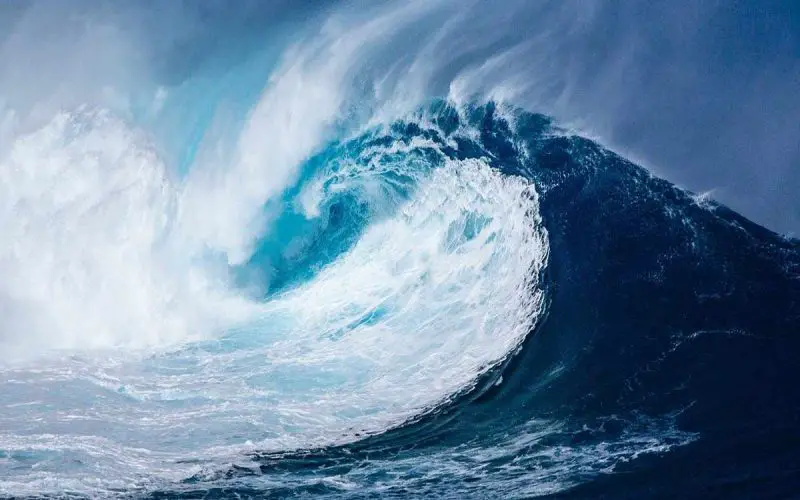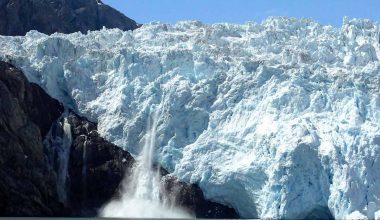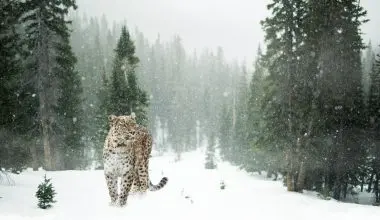Table of Contents Show
You’ve perhaps heard that the most of our planet’s surface is covered by oceans. It’s exactly shy of 71 %.
What you may not have heard, however, is that waves can move at hundreds of miles per hour, or that the ocean bed is home to heaps of gold, or that researchers have more thorough, more detailed maps of the planet Mars than the oceans on our own planet.
Facts about the Ocean
1. The ocean is home to approximately 95% of all life.
With the sheer volume of our oceans, we tend to overlook the fact that oceans are full of life and extensive ecosystems. Actually, 94% of life on Earth is underwater, which startlingly makes us, who live on land, an extremely small minority of life on Earth.
2. Coral makes its own sunscreen.
Excessive sunlight can harm the algae that live within coral in shallow water. To shield the algae, which are a core source of food for the coral, the corals fluoresce. This produces proteins that act as a kind of sunscreen for the algae.
3. There is an abundance of gold in the ocean.
There’s about 20 million tons of gold spread all over the oceans. It is, though, diluted to a pulp. The ocean floor, however, still has solid gold in it, but it’s not economical to mine it.
But, if the ocean’s gold were to be distributed equally among every single person on earth, we’d respectively get nine pounds of gold.
4. There’s an ice sheet vaster than the United States.
Only two masses of ice remain from our planet’s final ice age: Antarctic Ice Sheet and the Greenland Ice Sheet. The former of the two is incredible in size.
Measured at 5.4 million square miles, it’s approximately the size of the United States and Mexico combined!
5. Sharks have their own underwater café
People aren’t the only beings that need a winter vacation! In 2002, researchers discovered a part in a faraway area of the Pacific Ocean, partly between Baja California and Hawaii, where coastal great white sharks will habitually travel to in the winter.
The researchers termed the spot the White Shark Café and some sharks linger around the spot for months before going back to the coast for warmer temperatures.
6. The Earth’s longest mountain range is underwater and is 10 times longer than the Andes.
The longest mountain range on land is the Andes, which is around 4,300 miles. However, the longest mountain range on our planet is the Mid-Oceanic Ridge which runs between all continents and is measured at about 40,390 miles.
7. The Pacific is wider than the moon.
From Indonesia all the way to Colombia, at its widest point, the Pacific Ocean is wider than the moon by a lot, more than five times than the diameter of the moon to be exact, the vastness of the Pacific Ocean being 12,300 miles across.
8. A single iceberg can supply a million people with drinking water for five years.
A huge iceberg from Antarctica holds more than 20 billion gallons of water, which might possibly supply one million people with drinkable water for five years. However this data isn’t enough to demonstrate just how enormous these icebergs are.
A firm in the United Arab Emirates is in fact arranging to start towing icebergs from Antarctica to the coast for precisely this purpose.
The country gets, on average, only four inches of precipitation per year, and is in danger of severe drought in the next 25 years, but could be able to resolve the impending disaster with this iceberg water solution.
9. Pressure at the bottom of the ocean would crush you.
In the Mariana Trench (35,802 feet beneath the surface) – the deepest point on the planet – water pressure is eight tons per square inch.
If a human attempted to go down there, the pressure they’d feel would be equivalent to that of holding up around 50 jumbo jets.
10. Water at the bottom of the ocean is extremely hot.
In these deepest depths of the ocean, the water temperature can be 2ºC to 4ºC, excluding the water from hydrothermal vents in the seafloor. The water flowing from these outlets can be up to 400º Celsius (750º Fahrenheit).
It’s the same aforementioned powerful pressure at these depths that would crush you that refrains the water from boiling.
11. The planet’s largest waterfall is in the ocean.
The biggest waterfall on land is Angel Falls in Venezuela which has a drop of over 3,200 feet. On the other hand, that doesn’t compare to the Denmark Strait Cataract, which is an underwater waterfall between Iceland and Greenland, made by the temperature variance in the water on both sides of the strait.
When the cold water from the east meets the warm water from the west, it moves beneath the warm water, with a descent of 11,500 feet.
12. The loudest ocean sound came from an icequake.
In 1997, the National Oceanic and Atmospheric Administration (NOAA) documented one of the loudest noise ever logged, which they called “The Bloop.”
The sound was so loud that it could be felt by sensors over 3,000 miles away. Initially, studies illustrated that the nature of the sound made it seem as if it came from an animal, though no identified animal exists that is big enough to make that sound.
After 15 years, the NOAA decided that the sound came from an icequake, which is when seismic events cause a disruption in frozen ground. Nevertheless, a lot of people still question this deduction, and The Bloop is the cause of many conspiracy theories to this day.
13. More people have been to the moon than to the Mariana Trench.
In the history of mankind, 12 people have set foot on the moon, however just three individuals have been able to make it to the Mariana Trench, for the extreme environments there. One of those people was Director James Cameron.
14. Oceans have lakes and rivers too.
The ocean is completely its own distinct realm. There are volcanos, mountains, trenches, and lakes and rivers. As seawater makes its way through layers of salt, it creates slight depressions on the ocean floor.
Since the water around these depressions has more salt than standard seawater, it’s denser and descends into the depressions, forming small salty pools. These are very similar to the lakes we are familiar with, meaning they have shores and some of them even have waves.
15. The Mediterranean used to be dry.
The Mediterranean used to be a waterless basin up until some 5 million years ago, in the period of the Zanclean flood, when water from the Atlantic decanted through the Strait of Gibraltar and filled the basin.
There are many theories as to how this occurred, but one tragic analysis has the basin filling up in only two years, owing to a gigantic gush of water.
16. The ocean’s canyons give the Grand Canyon a run for its money.
Not to take away from the beautiful Grand Canyon, but the Zhemchug Canyon found in the Bering Sea is almost 2,500 feet deeper than the Grand Canyon, having a vertical relief of 8,520 feet
17. Sea ice is fit to drink.
Though one cannot drink sea water, you can drink sea ice. Still, you don’t want to ingest raw sea ice, which still has small amounts of brine confined between ice crystals.
Eventually, the brine drains from the aging ice and it becomes fresh enough that, it can be thawed and drank.
18. There’s an internet connection in the ocean.
For the past few years, underwater cables submerged deep in the oceans have supported more than 97% of intercontinental data traffic—meaning that foreign communication is made conceivable by ocean-based cables.
19. Most of Earth’s volcanic activity happens in the ocean.
When it comes to volcanic activity, the oceans have the most going on by a wide margin. In fact, 90 percent of all the volcanic activity on the planet happens in the ocean, and the largest known concentration of active volcanoes is in the South Pacific. It’s an area no bigger than the size of New York, but it contains a whopping 1,133 volcanoes.
20. Tsunamis travel at 500 miles per hour.
Tsunamis are caused by seismic activities and can travel across the ocean at the rapidity of 500 miles per hour when the ocean depth is 3.7 miles.
These waves typically go undetected because they are only a few inches above the surface. And as the waves head for land—and the depths lessen—they pick up water and grow in above-surface size (however, luckily, slow down).
21. Because of the ocean, most of our planet is dim.
Oceans have an average depth of 12,100 feet and since light waves can just breach 330 feet of water, everything under that point is dark.
Given that water makes up most of the Earth, this means that majority of planet exists in complete blackness constantly.
22. The United States misplaced a hydrogen bomb in the ocean.
Every single year, shipping vessels get lost in the ocean, and oil spills are sadly normal. However in 1966, the United States lost a hydrogen bomb at sea.
Fortunately, it was ultimately located with the assistance of a Spanish fisherman.
23. The world’s biggest living structure is in the ocean.
The world’s biggest living structure isn’t a huge cluster of trees or even a gigantic fungus—it is the Great Barrier Reef off the coast of Australia.
The reef extends over an area of 133,000 square miles, and is so massive it can in fact be seen from outer space.
24. There are 3 million shipwrecks in the ocean
According to the United Nations Educational, Scientific and Cultural Organization, the oceans are home to about 3 million shipwrecks, including Columbus’s Santa Maria and the Titanic.
25. The ocean has more relics than all the world’s museums combined.
Thanks to the loads of shipwrecks, the ocean houses innumerable treasures and relics. National Geographic guesses that there are more treasures on the ocean floor than in the entire world’s museums combined.
26. If all the ice melted, the sea level would upsurge 26 stories.
If all of the glaciers and sheets of Arctic sea ice liquefied together, the sea level would grow a projected 262 feet, which is roughly the elevation of a 26-story building— just shy of the Statue of Liberty’s height.
27. The ocean is a magnet for heat.
The ocean is the leading solar energy accumulator on earth. The spread of greenhouse gases stops heat from leaving our planet’s atmosphere, and all that energy has to go someplace—sadly, it goes straight into the oceans.
As a consequence, ocean temperature has swiftly gone up over the past few years.
28. The ocean is our greatest source of oxygen.
Most of the oxygen in our atmosphere originates from small marine plant life in the ocean—precisely, algal plankton, phytoplankton and kelp. According to National Geographic, experts assess that they’re accountable for about 70% of the atmosphere’s oxygen.
29. The biggest ocean waves are underneath its surface.
The largest ocean waves are not the ones that you see from the seashore. The biggest waves that befall in the ocean are termed internal waves, which occur between two fluids with two varying densities.
As these internal waves move for thousands of miles they can grow to be 650 feet in height.
30. We have more detailed maps of Mars than of the ocean.
Less than 5% of the ocean has been discovered. Actually, we have more thorough maps of Mars than of the oceans, regardless of the fact that it’s almost 50 million miles away.
31. More than 90% of the Earth’s lifeforms are unexplored and underwater.
Because so little of the oceans have been discovered, it is presently projected that 91% of the species that live under the sea have still to be explored.
32. Almost 100% of Earth’s living space is in the ocean.
The oceans make for nearly all of the living space on Earth. This brands the planet’s oceans the biggest spaces in the identified universe occupied by living entities.
So the next time you go to the beach with your family or friends, think about what you are literally stepping into – a barely undiscovered, essential to life, literal treasure chest of a phenomenon that can only provide exciting adventures and thrilling mystery to anyone going for a fun day out or for the biologists deep sea diving for answers…the ocean is a mysterious and exciting place indeed!






